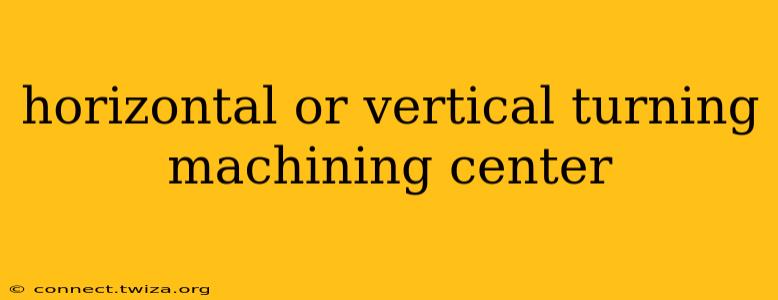Choosing between a horizontal or vertical machining center (HMC or VMC) is a crucial decision for any manufacturing operation. The best choice depends heavily on the specific applications, workpiece characteristics, and production volume. This comprehensive guide will delve into the key differences between these two types of machines, helping you make an informed decision.
What is a Horizontal Machining Center (HMC)?
A horizontal machining center features a horizontally oriented spindle. This means the cutting tool rotates parallel to the worktable. HMCs are often preferred for high-volume production runs of parts requiring complex, multi-sided machining. Their design allows for automated tool changes and pallet systems, significantly increasing efficiency. The workpieces are typically clamped and rotated to access different surfaces.
What is a Vertical Machining Center (VMC)?
A vertical machining center, on the other hand, has a vertically oriented spindle. The cutting tool rotates perpendicular to the worktable. VMCs are generally more versatile and easier to program, making them ideal for a wider range of applications, including smaller production runs and prototype work. They're often chosen for their accessibility for loading and unloading parts.
HMC vs. VMC: Key Differences
Here’s a table summarizing the core distinctions:
| Feature | Horizontal Machining Center (HMC) | Vertical Machining Center (VMC) |
|---|---|---|
| Spindle Orientation | Horizontal | Vertical |
| Chip Management | Generally better | Can be more challenging |
| Workpiece Handling | Often automated, pallet systems | Manual or automated |
| Programming | Can be more complex | Generally simpler |
| Versatility | Less versatile | More versatile |
| Cost | Typically more expensive | Typically less expensive |
| Applications | High-volume production, complex parts | Prototyping, small to medium batches, simpler parts |
What are the Advantages of a Horizontal Machining Center?
- Improved Chip Management: The horizontal spindle orientation allows for gravity to assist in chip removal, minimizing the risk of clogging and improving machining efficiency.
- Automation Capabilities: HMCs often integrate with automated tool changers and pallet systems, maximizing throughput and minimizing downtime.
- Ideal for Complex Parts: Their design is well-suited for machining parts with multiple sides and intricate features.
- High Precision and Accuracy: The rigid construction and robust design contribute to high precision and accuracy in machining.
What are the Advantages of a Vertical Machining Center?
- Ease of Use and Programming: VMCs are generally easier to program and operate, making them accessible to a wider range of machinists.
- Better Accessibility: The vertical spindle provides better access to the workpiece for loading, unloading, and inspection.
- Versatile Applications: Suitable for a broader range of applications, from small-batch production to complex part machining.
- Cost-Effective: VMCs tend to be less expensive than HMCs, making them a more affordable option for smaller businesses or shops.
What are the Disadvantages of a Horizontal Machining Center?
- Higher Initial Cost: HMCs typically come with a higher price tag.
- More Complex Programming: Programming can be more intricate, requiring specialized expertise.
- Less Versatile: They're less adaptable to a variety of workpiece sizes and shapes compared to VMCs.
What are the Disadvantages of a Vertical Machining Center?
- Chip Management Challenges: Chip evacuation can be more challenging than in HMCs, potentially leading to clogging.
- Limited Automation: While automation is possible, it's not as readily integrated as in HMCs.
- Less Suitable for Complex Parts: Machining complex parts with multiple sides can be time-consuming and less efficient.
Which Machine is Right for My Needs?
The best choice between an HMC and a VMC depends entirely on your specific manufacturing requirements. Consider the following:
- Production Volume: High-volume production often benefits from the automation capabilities of an HMC.
- Part Complexity: Complex, multi-sided parts are better suited for HMCs. Simpler parts can be efficiently machined on VMCs.
- Budget: VMCs generally have a lower initial investment.
- Skilled Labor Availability: Consider the expertise required to program and operate each machine type.
By carefully evaluating your needs and comparing the strengths and weaknesses of each machine, you can make an informed decision to optimize your manufacturing processes and achieve maximum efficiency.
